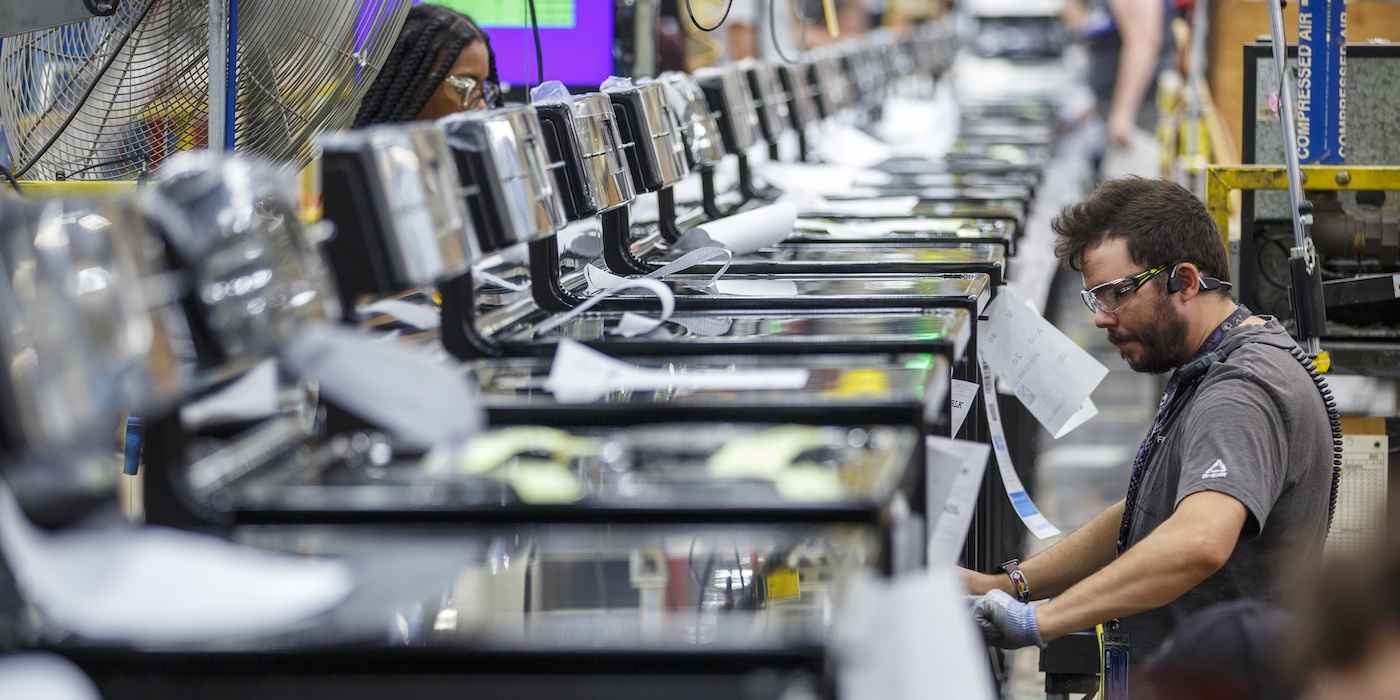
Why few people truly take the lean leap
FEATURE – To wholeheartedly embrace lean means to accept changes in our hearts and minds. Understanding this means to finally grasp the reason why lean is only truly taken up by few.
Words: Michael Ballé, lean author, executive coach and co-founder of Institut Lean France
Why do so few people truly commit to lean? This has been a common question we have received after publishing Raise the Bar. I am fortunate to work with several CEOs, who have fully committed to lean as their strategy for two reasons: they want to create a different kind of company, a more fulfilling place that is also technically better than competitors, and they seek better outcomes in terms of sustainable profitable growth.
The first commitment of these CEOs is to the gemba – go and see problems at their source. Seeing lean from both the top, at board level, and the bottom at work level (though why should the top be the board? We should inverse the pyramid) gives you a unique perspective in understanding problems and results.
What we clearly see is that when teams are practicing customer focus, daily kaizen, visualization of problems, and challenging themselves on finding muda, recognizing mistakes and correcting them, results improve. When teams lose focus and start drowning in the every-day work, firefighting and battling with neighboring teams, results deteriorate. What is equally clear is that the state of the team depends on whether the manager accepts the lean exercises and tries to learn from them or pays lip service to the lean program and dismisses it in her every-day management.
Company-wide, sometimes you manage to have enough department heads working on lean and collaborating at executive committee level, and it feels magical. However, when people move on to new jobs, market conditions change, or enough executives revert to the traditional mindset, you often have the sinking feeling that you need to rebuild it all. Pushback (arguing against a lean exercise) and backslide (abandoning a practice that worked well) are normal parts of the game, as we describe in the book.
This part we now understand quite well. The more puzzling aspect of lean is that although execs frequently accept to play along with it – go to gemba, discuss problems, encourage kaizen, collaborate with upstream and downstream with A3s, even sustain the visual management – few actually make the effort of fully studying and learning the Toyota Production System to understand what it means in their case (our definition of lean is learning the Toyota Production System outside of Toyota).
Yes, the step is steep and the door narrow. You not only have to learn the elements of the TPS and understand how they work as a system, but you also have to grasp the fundamental values of the Toyota Way (genchi genbutsu, kaizen, challenge, teamwork and respect) if you are to make it all work as it should. You may never quite know TPS and are always learning it – just as, in Tai Chi, you never fully know a form and you’re always learning a form – but it’s fun, keeps the work interesting and is always personally enriching. So, why do so few people make the effort?
Framing the problem this way, you can see this is not limited to companies with CEOs having adopted lean as their main strategies. You can see the same with consultants who coach specific lean tools but do not practice Lean Thinking themselves. Or companies with huge lean programs, lean officers and kaizen drives, where no one actually tries to figure out what “this lean thing” is really about. It turns out this is a very common issue in the lean world.
As we discuss and debate this, it is natural to wonder what it is about lean that requires days, weeks, years of gemba-based practice with a sensei to learn – much like, say, yoga or a martial art. What deeper traits are we trying to change that need such consistent and strenuous practice? My hunch is that we’re facing two tremendous changes: one in minds, the other in hearts.
The mind change is about reframing situations as problems and countermeasures, as opposed to activities or actions and objectives. Problems can either be detailed issues of kaizen – making an activity safer, eliminating rework, reducing movement at a workstation and so on – or huge challenges – such as greening your company or dealing with technological or market challenges like supply chain disruptions. Whether macro or micro, defining the problem is very different from jumping to a solution “just because” to get a certain result and then see what happens.
Solutions are seldom found at the logical level where the problem appears. If they were, people would have found them right away. Which is why, in Lean Thinking, you either go bigger picture or more detailed on the gemba. You constantly shift logical level to achieve what Taiichi Ohno called “logic escape” and find a new way to experiment – not so much in the hope of solving the problem, but in the hope of understanding it better. The depth of your understanding of problems drives your every-day decisions and drastically enhances your performance. Also, teaching yourself to react to events by first asking, “What is the problem we’re trying to solve?” gives a way to (pun intended) lean in immediately and avoid sideration, watching the fire burn without knowing where to start. Seeing a job as problems/countermeasure is a challenging mental step.
The heart change is just as important, though often harder to see in our societies. Lean requires committing to every individual’s personal and professional growth rather than using them to get something done and achieve this or that result. Our first impulse when faced with new information is to react. Not only do we immediately think “this must be done to achieve that”, without pausing to consider the problem, but we also jump to the conclusion that “so and so must do this”. We use people as a matter of fact, and we believe this is a perfectly normal part of life at work built on subordination: the boss has the right to ask the employee to do any task and to reward or punish according to how well he or she considers the task is done.
Lean takes a completely different perspective. The lean theory is that performance is based on trust. The two dimensions of trust are trust on competence (if competent people understand the problem to solve, they will make smart decisions and take effective action) and trust of each other (if engaged people work to help each other deal with common obstacles, they will achieve wonders). The lean solution to performance is therefore people development: helping people to grow both in their technical skills but also in their leadership, their ability to draw other people in, collaborate and create teamwork. Teamwork is, in fact, a result of the commitment to develop people. By striving to support individual personal and professional growth, we create stronger teams that react better to challenges.
Clearly, neither shifting to problems/countermeasures, nor to personal/professional growths models is without conflict. Some people want to implement whatever comes to their mind and resent being challenged to think about the problem first. Others consider that their personal development is nobody’s business but their own and want to be recognized for who they are and what they do here and now, not for their efforts to improve. And that’s absolutely fine. The point of Lean Thinking, however, is seeking those who strive to improve themselves and their work environment, connecting them together and creating a different kind of business.
As market conditions continuously change and processes constantly becomes more complex, activities turn to waste, unnecessary non-value adding work, and organizations rigidify. Lean outperforms any other business strategy because it orients to the real challenges, focuses on waste and obstacles, thus getting people to collaborate on smarter ways of doing things. The constant practice of kaizen teaches flexible thinking, so that when people have to adapt to sudden market changes, they know how to do it and how to correct their initial responses in order to continue to strive for better results for customer and better ways of doing things.
In lean, mutual trust is the engine of performance, based on respect (accepting responsibility for problems) and teamwork (stimulating every person’s growth). This creates much better human work environments, of which higher performance is a by-product. Still, few people wholeheartedly devote themselves to studying lean, understanding how it works and mastering its practices. To understand why, I believe that we need to meditate on the heart and mind changes implied in adopting lean and grasp why they are so difficult to most of us.
One is being clear eyed about problems, even though we might not immediately have the means to solve them. The other is committing to other people’s growth (through one-by-one problem solving), even though it might not be as expedient as giving them instructions. And yet, looking at it daily on the gemba, I am convinced that these mind and heart changes are the key to inventing completely different work environments and finally breaking free of the shackles of brutal exploitation that seem to be driving so many organizations and creating so much waste. As I was taught in Toyota’s African operations many years ago, we strive for cool minds and warm hearts.
Michael will be speaking at the upcoming Lean Global Connection. Do you have your tickets yet? Register for FREE here.

THE AUTHOR

Michael Ballé is a lean author, executive coach, and co-founder of Institut Lean France. His latest book (co-authored with Nicolas Chartier, Guillaume Paoli and Régis Medina), Raise the Bar, is out now.
Read more


INTERVIEW – Learn how Lean Thinking helped GE Appliances improve performance, develop people, and build a resilient, customer-focused, and learning-driven organization.


CASE STUDY – Faced with complex logistics and customer complaints, a small deli and butchery in Botswana saw in lean a way to bring the business back from the brink. The philosophy didn’t fail them.


INTERVIEW – At the recent Lean IT Summit, Planet Lean spoke to BlaBlaCar, a Paris-based company that has managed to keep the startup way of thinking alive in the face of the hypergrowth it experienced in the past four years.


INTERVIEW – Following his 10 years at Toyota Industries Corporation (TICO) teaching his Dantotsu method for radical quality improvement, Sadao Nomura spoke to Japanese magazine Kojo Kanri (Factory Management).

